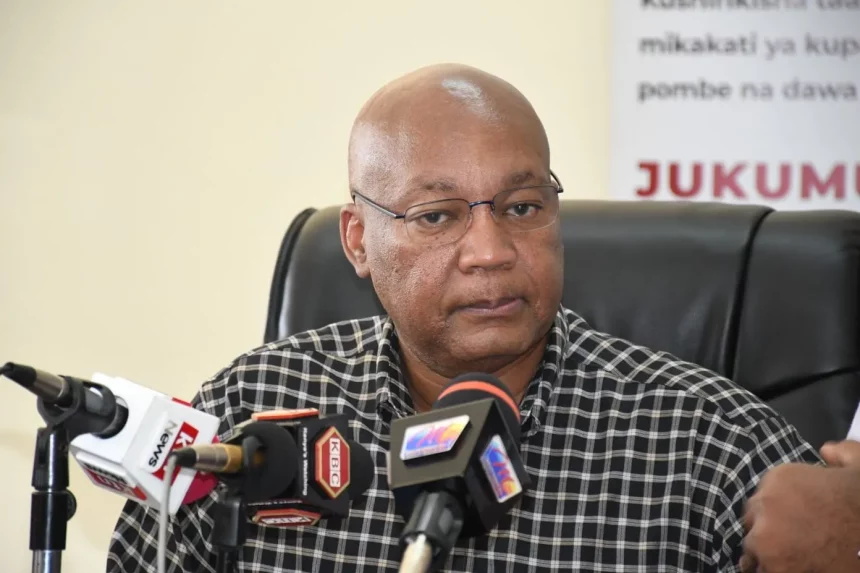The National Authority for the Campaign Against Alcohol and Drug Abuse (NACADA) is investigating the possible use of Fentanyl drugs in the coastal region of Kenya.
National Institute on Drug Abuse describes Fentanyl as a powerful synthetic opioid analgesic that is similar to morphine but is 50 to 100 times more potent.
Nacada acting chief executive officer John Muteti said a multi-sectoral team has been deployed to all six Coastal counties to probe allegations that the deadly drug is being supplied and consumed in the region.
The drug is approved by the Food and Drug Administration for use as an analgesic (pain relief) and anaesthetic.
Although there is no conclusive proof to point out the presence of the drug in Kenya, Nacada says many injecting drug users are now divulging to multiple drug use, and a possibility of Fentanyl abuse may be rife.
“We have a multi-sectoral team which has been on the ground for some time collecting samples, which we intend to take for analysis at the government chemistry department and we will produce a report in the next 14 days, we shall communicate the report to the country,” Muteti said.
The drug is outlawed in the country but Nacada reads mischief, especially after video clips of drug users suspected to be from the Kenyan coast went viral on social media showing the drug users very intoxicated.
“We have seen some videos circuiting around showing people in a bad state of intoxication. We are here to find out what substance they must have consumed, it’s not clear where these videos came from. It’s not clear whether they are from Kenya or which country, but this has forced us to take samples of other drugs to see whether it’s a case of multiple drug use,” Muteti said.
Part of the samples collected includes a collection of urine and blood samples that will be analyzed at the Nairobi government chemistry to establish whether users may have come across the Fentanyl drug at the coast.
The Drug authority is now throwing caution to the public to report cases of multiple drug use to authorities. It also calls on other agencies to seal the borders and ensure the drug does not find its way into the Kenyan market.
Reach Out Trust Centre Chief Executive Officer Taib Abdurahman said the problem of polydrugs was rampant at the coast thus forcing the team to collect samples from users to establish the real drug they have used.
“We have seen incidents of polydrugs, that’s why we are embarking on this investigation to establish which drugs they use, we don’t want to speculate because a report must be informed by findings,” Taib said.
The multi-agency team comprises the Government Chemist, Pharmacy and Poisons Board, Mombasa-based Community Organizations and officers of the National Government Administration (NGA).
Players say this may have been attributed to the shocking shortage of Heroin in the market, a possibility that may plunge many drug users to indulge in polydrug use to satisfy their anxiety.
While addressing a joint media briefing MEWA hospital advocacy officer Hussein Taib alleged that the situation has become evident following a sharp rise in the price of the Heroin drug from Ksh200 to Ksh400 per sachet.
“We are currently experiencing a shortage of heroin, there is a crisis actually because the product has become too expensive and this may result in those who depend on it getting involved in polydrug use here at the coast,” Hussein said.
Hussein added that so far there is no evidence to prove whether the drug is in the country, but acknowledged that a threat of multiple drug use by users has become rampant in Mombasa.
“Let’s not wait until this drug gets into our neighbourhoods. We also ask government agencies and customs to be alert and ensure this new drug does not become a threat by finding a space in the market,” Hussein said.



